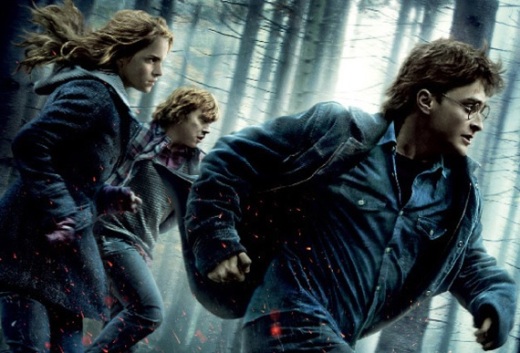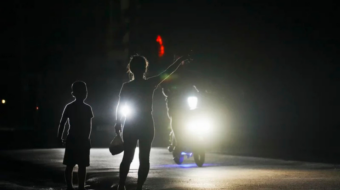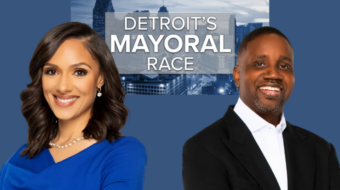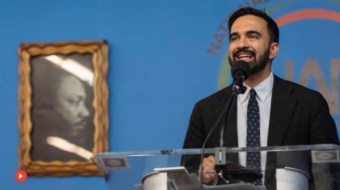
Movie review
Harry Potter and the Deathly Hollows Part 1
Directed by Robert Yates
2010, 146 min., PG-13
The 20th century wasn’t a particularly good one in historical terms: more people were killed in war than in previous centuries combined; we saw fascist states for the first time; and the century ended with multiple wars raging around a world cowed by the threat of terrorism.
Still, it was that same century that, among other historical breakthroughs, brought us Nelson Mandela and the overthrow of apartheid, the Rev. Dr. Martin Luther King Jr. and the U.S. Civil Rights Revolution, women began to assert their rights and the United Nations was established.
Clichés are only clichés in that they are truths repeated too many times, and it therefore would not be a total loss to use one here: it was an age of extremes.
The preceding 100 years or so brought the world great evils never before imagined – who could have conceived of the awesome terror of the nuclear bomb? – but those same evils produced an opposite, if not yet equal, reaction. Humanity began to assert and reassert its generally cooperative nature, though how things will turn out in the long run is anyone’s guess.
Perhaps we’ll move on to better society; perhaps we’ll wipe ourselves away in a cloud of greenhouse gases.
Given that background, J.K. Rowling’s Harry Potter series, most especially in its original written form but also in its film version, provides a literary finale to the century. Begun in 1998, these works can be interpreted as something of a summing-up.
Children’s tales have always dealt with good vs. evil, but Rowling’s work, while acknowledging a timeless feature of all that which is bad, gave evil a modern feeling: the villains were totalitarians and fascists, racists and bigots, dictators and environmental destroyers – all in magical form.
Another question is brought to the fore as well: what is the nature of good and evil? Where do they overlap? Can the “good guys” have evil tendencies?
The series, of course, chronicles the story of Harry Potter and his two best friends, Ron Weasley and Hermione Granger (in the film version, Daniel Radcliffe, Rupert Grint and Emma Watson respectively) growing up under the threat of Voldemort, an evil wizard bent on world control, and his Nazi/KKK-like minions.
Their journey from innocent wonder at a magical world to scared fighters under siege parallels humanity’s loss of innocence.
The most recent film, “Harry Potter and the Deathly Hallows Part One,” is the darkest of the series. While the series had been growing increasingly serious, Deathly Hallows represents a qualitative change. At the movie’s opening, Hedwig, Harry’s owl and long-time companion, is struck dead by evil wizards, as is another member of the Order of the Phoenix, a sort of magical guerilla army working to defeat Voldemort. Hermione, in order to protect her family, casts an “obliviate” spell, wiping her parents’ memories away – including any thought of her.
The wizard world’s government, the Ministry of Magic, falls near the beginning of the movie, only to be replaced by a puppet regime. The new government, under control of Voldemort, is essentially an enchanted Third Reich, bent on enslaving or exterminating “inferiors” – non “pure blood” wizards.
Harry Potter and his friends don’t return to Hogwarts this time; instead they spend their time “underground” attempting to plan their strategy.
The acting is superb. The adult character, since the series began, have been played by British A-list actors, including Alan Rickman. But Radcliffe, Grint and Watson were sorely lacking in credibility during the early films. Now, however, they have seemingly magically transformed into actors. Aside from one particularly unfortunate scene in which Ron sees a truly silly vision of Harry and Hermione scorning him, the trio are able to pull off a high degree of emotional intensity.
This intensity is surprising for a series that started out as a children’s story. Previous films shyly explored the characters’ budding sexuality, but in the current installment, that sexuality is in bloom – and, like in the real world, is preyed upon by enemy armies. At several points in the film, one gets the impression that Hermione is about to be raped. Of course, this is a PG-13 film, and such things are implied only, but the shock felt by the audience is no lesser.
The action sequences are also top-notch. But perhaps the most interesting aspect of the film is the way the characters deal with their quandary. On previous outings, they had been full of hope and a syrupy-sweet you-can-do-anything-with-your-friends attitude, but in Deathly Hallows, each of them vacillates between hope, despair and cynicism. Is it better, Hermione asks while she and Harry are in the woods alone, to continue the fight, or to just give up, “to stay here and grow old?” The future of their world is very much up in the air.
The film, being the first of a two-part finale, doesn’t offer any resolve to this question. In that sense, it mirrors a humanity embarking on the 21st century. For me and perhaps the non-magical world, Voldemort is environmental destruction, war and terrorism, the tea party, increased poverty and wealth gaps. And, for the first time in history, people question the viability of humanity going forward.
Deathly Hallows Part 1 mirrors us; hopefully Part 2 will inspire us.










